Functional characterization of Alzheimer's disease genetic variants in microglia
- PMID: 37735198
- PMCID: PMC10939305
- DOI: 10.1038/s41588-023-01506-8
Functional characterization of Alzheimer's disease genetic variants in microglia
Abstract
Candidate cis-regulatory elements (cCREs) in microglia demonstrate the most substantial enrichment for Alzheimer's disease (AD) heritability compared to other brain cell types. However, whether and how these genome-wide association studies (GWAS) variants contribute to AD remain elusive. Here we prioritize 308 previously unreported AD risk variants at 181 cCREs by integrating genetic information with microglia-specific 3D epigenome annotation. We further establish the link between functional variants and target genes by single-cell CRISPRi screening in microglia. In addition, we show that AD variants exhibit allelic imbalance on target gene expression. In particular, rs7922621 is the effective variant in controlling TSPAN14 expression among other nominated variants in the same cCRE and exerts multiple physiological effects including reduced cell surface ADAM10 and altered soluble TREM2 (sTREM2) shedding. Our work represents a systematic approach to prioritize and characterize AD-associated variants and provides a roadmap for advancing genetic association to experimentally validated cell-type-specific phenotypes and mechanisms.
© 2023. The Author(s), under exclusive licence to Springer Nature America, Inc.
Conflict of interest statement
Competing interests statement
The authors declare no competing financial interests.
Figures
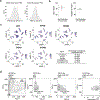
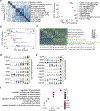

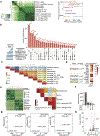


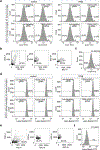

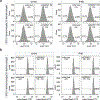



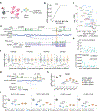

References
Methods-only reference
MeSH terms
Grants and funding
- S10 OD028511/OD/NIH HHS/United States
- UM1 HG009402/HG/NHGRI NIH HHS/United States
- U01 HG011720/HG/NHGRI NIH HHS/United States
- R01 AG054214/AG/NIA NIH HHS/United States
- R01 AG057497/AG/NIA NIH HHS/United States
- R01 MH125236/MH/NIMH NIH HHS/United States
- P30 DK063720/DK/NIDDK NIH HHS/United States
- R01 EY027789/EY/NEI NIH HHS/United States
- P50 HD103573/HD/NICHD NIH HHS/United States
- R56 AG079291/AG/NIA NIH HHS/United States
- S10 OD021822/OD/NIH HHS/United States
- RF1 AG079557/AG/NIA NIH HHS/United States
- P30 AR070155/AR/NIAMS NIH HHS/United States
- R01 MH123724/MH/NIMH NIH HHS/United States
- R01 AG072758/AG/NIA NIH HHS/United States
- R01 AG079291/AG/NIA NIH HHS/United States
LinkOut - more resources
Full Text Sources
Medical
Molecular Biology Databases
Research Materials
Miscellaneous

